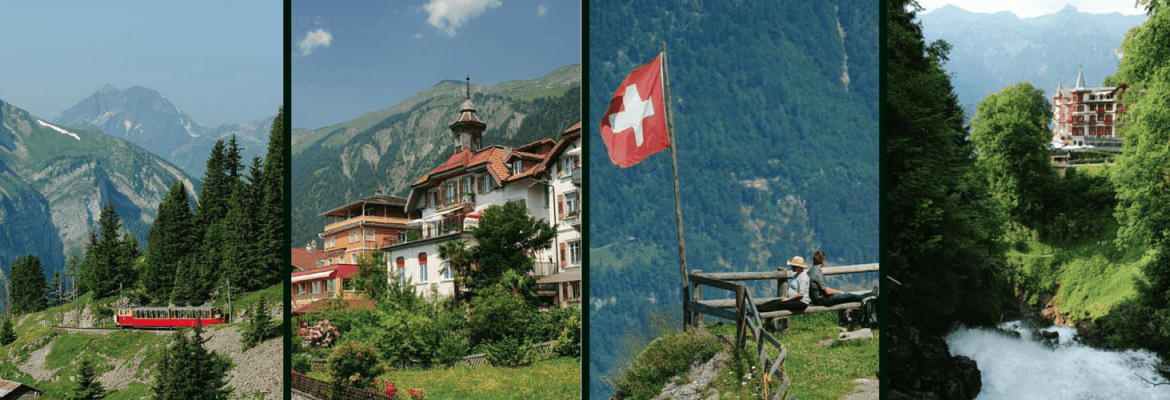FROM MY perch among the flowers of an Alpine garden looking across the valley to the north face of the Eiger, the stories about ascents of the infamous mountain were as staggering as the views.
I casually asked our guide, Martin, how long climbers took to conquer the Eiger, which, incidentally, looked forbidding even from afar. The answer was usually two days, with the climbers spending a night suspended from the rock face in
their sleeping bags. The quickest is two hours 21 minutes!

The high-speed sort of ascent is achieved by daredevil free climbers who use no ropes but just have an ice axe in each hand, crampons on their feet – and their heart in their mouth, I should think. Neither method sounded ideal.
Unsurprisingly, we made our own ascent to Schynige Platte the easy way – on the cogwheel railway. No need for dangling sleeping bags either: if you want to stay overnight, there’s a comfortable hotel.This winding journey up through meadows of grazing cattle complete with cowbells, then traversing woods and skirting precipitous drops, summed up the glories of Switzerland in summer.
The trip up and down on a lovely day – an hour each way – was pure pleasure.
From 6811ft the views are sensational over towards the three mighty Alps: Jungfrau, Monch and Eiger – or the Virgin, the Monk and the Ogre as they are nicknamed locally.
They are all more than 13,000ft.Beyond, the snow-capped Bernese Alps stretch away.
Immediately around my rocky seat amid the 600 species of the Alpine Botanic Garden at the top of Schynige Platte, lush green has replaced the deep snow that takes over in winter.
There’s a moderate descent and walk down through meadows to some farm buildings.
There are several marked walks for the more energetic. However, lots of us were happy just to wander around the garden, drink a Sunday morning coffee at the hotel and enjoy the mountain air and beautiful vistas before taking the train
back down towards our base in Interlaken. Descending provides the best view of the two lakes that give the town its name – Lakes Brienz and Thun. Brienz almost glows turquoise and emerald in the sun, while Thun is an impassive steely blue. Alpine rock fragments washed down into Brienz produces its iridescent colours.

